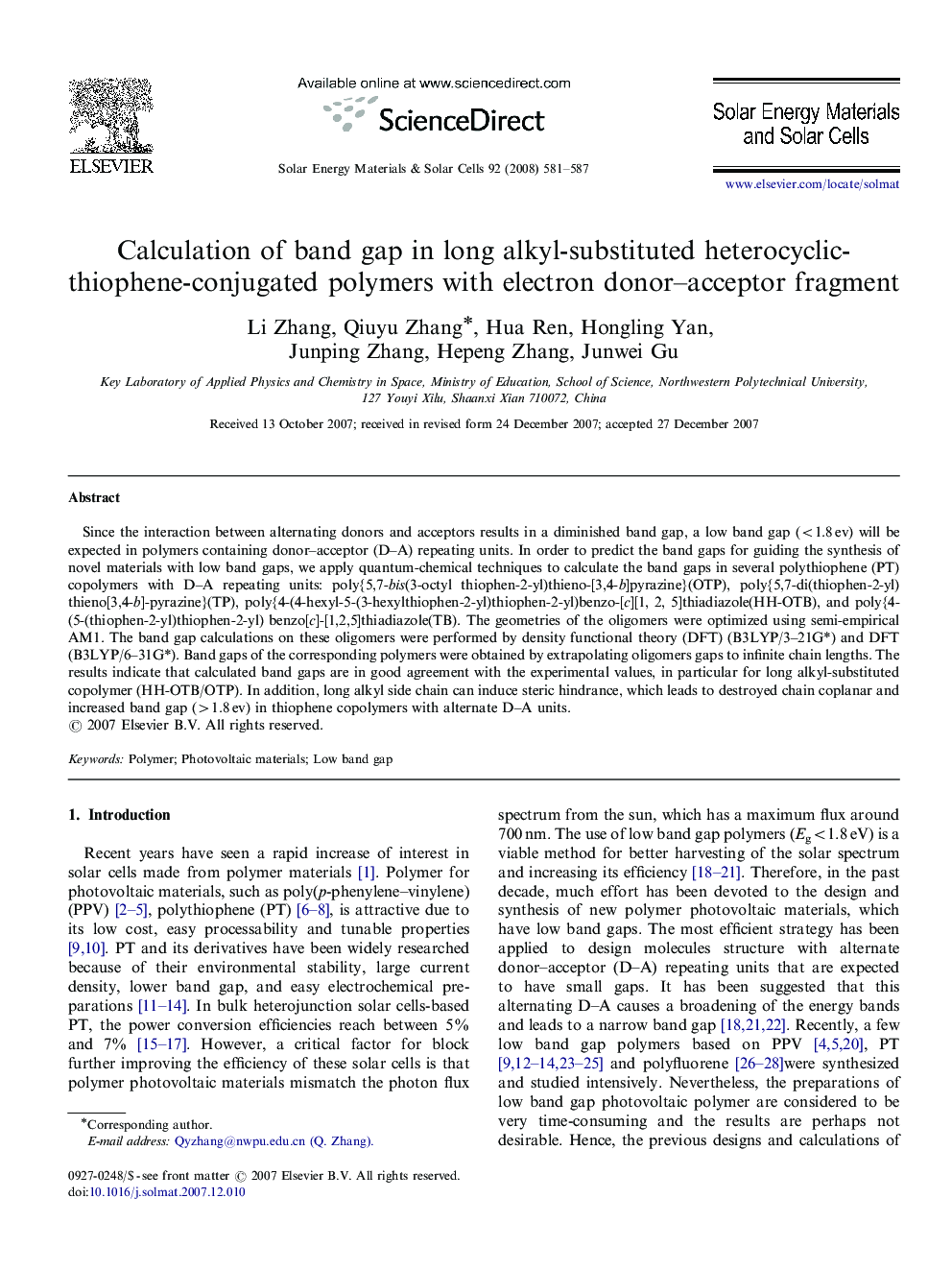| Article ID | Journal | Published Year | Pages | File Type |
|---|---|---|---|---|
| 80808 | Solar Energy Materials and Solar Cells | 2008 | 7 Pages |
Since the interaction between alternating donors and acceptors results in a diminished band gap, a low band gap (<1.8 ev) will be expected in polymers containing donor–acceptor (D–A) repeating units. In order to predict the band gaps for guiding the synthesis of novel materials with low band gaps, we apply quantum-chemical techniques to calculate the band gaps in several polythiophene (PT) copolymers with D–A repeating units: poly{5,7-bis(3-octyl thiophen-2-yl)thieno-[3,4-b]pyrazine}(OTP), poly{5,7-di(thiophen-2-yl)thieno[3,4-b]-pyrazine}(TP), poly{4-(4-hexyl-5-(3-hexylthiophen-2-yl)thiophen-2-yl)benzo-[c][1, 2, 5]thiadiazole(HH-OTB), and poly{4-(5-(thiophen-2-yl)thiophen-2-yl) benzo[c]-[1,2,5]thiadiazole(TB). The geometries of the oligomers were optimized using semi-empirical AM1. The band gap calculations on these oligomers were performed by density functional theory (DFT) (B3LYP/3–21G*) and DFT (B3LYP/6–31G*). Band gaps of the corresponding polymers were obtained by extrapolating oligomers gaps to infinite chain lengths. The results indicate that calculated band gaps are in good agreement with the experimental values, in particular for long alkyl-substituted copolymer (HH-OTB/OTP). In addition, long alkyl side chain can induce steric hindrance, which leads to destroyed chain coplanar and increased band gap (>1.8 ev) in thiophene copolymers with alternate D–A units.
